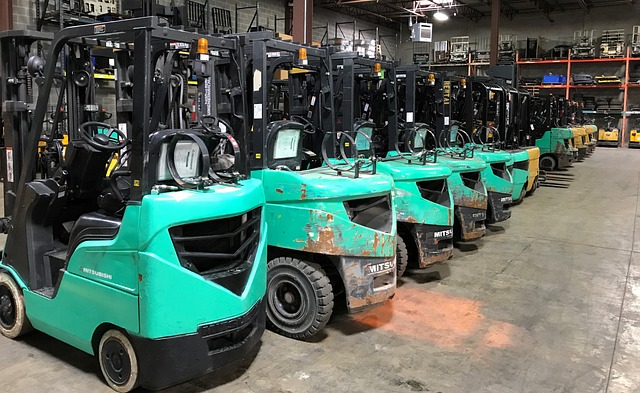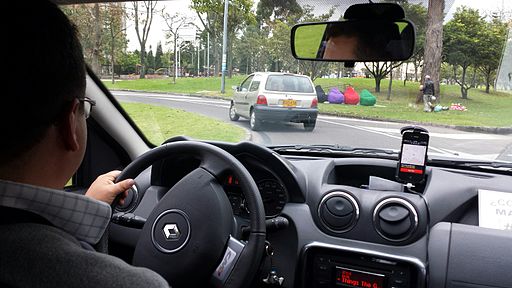More
5 Hacks For Kickstarting Business Production
Published
2 years agoon


It’s been a nervous economic time and you may be struggling to find ways to increase your customer base and grow your existing business. You may also be considering starting a business but in need of niche workers or funding.
When pitching your business to investors, many business owners overlook the importance of pitching their recruitment process. Especially in specialized fields such as tech, pharmaceuticals, and agriculture, investors are curious to know how you plan to fill your job vacancies with top-level employees. Even if your business has been operating for quite some time, it’s never too late to start looking for more qualified individuals to help kick-start your business production. All it takes is one team member at the top to bring about some serious change to your productivity and company culture.
There are also lots of ways to secure funding for your business. Many businesses that are first starting out, become money pits. Profits aren’t guaranteed for the first couple of years, and you may find yourself looking for more funding just to keep it going until you can overcome a time hurdle. Here are ways that you can staff your business with the best personnel and secure the funding to keep your business production going as you go through your growth phases.
Apply for Available Grants
Free money is about as good as it gets. There are many agencies and private charities that focus on a particular product base or client population. Carefully scrutinize what’s available for your
- industry
- employee population
- location
If you offer employment in an underserved area, you may be eligible for a grant. You may also be eligible to sell to specific government entities, both federal and state. If your location is in an economically challenged location, check in with county and city government agencies about tax breaks, low-cost funding for improvements, and help with utility upgrades and infrastructure.
Consider offering internship opportunities in your business. You can use these opportunities to train and vet candidates for crucial roles within your business. The payroll cost is super low for interns performing tasks within your company, and you may be able to secure additional grants and tax breaks as a result of starting an established internship program.
To find willing and qualified interns for your company, consider attending your local college’s job fairs. Advertise on social media. Ask for referrals from employees and clients. There are plenty of young people looking for work experience for their resumes and credit hours for their education.
Boost Your Specialized Staffing
No matter what you’re trying to create, you’re going to need people who know more than you do about some aspects of the business. Skilled personnel can actually become a part-time contractor or regular temp hire for your business on a weekly or as-needed basis.
Many companies are creating a hybrid model of temporary and permanent staffing for their business. Mundane, labor-intensive, and low-skilled positions in your company can be outsourced to temporary workers. This can actually save your business money. Especially if your production needs to be scaled up quickly for a busy month or season, you can pay minimum wages for certain jobs like packaging, cleaning, and maintenance when you need them, and avoid costly layoffs when demand starts to wane.
Make sure you focus on the top-level employees and executives in your business. You shouldn’t accept mediocrity in these crucial roles for your company. Top-level executives in your business won’t only boost your entire labor force, but they’ll also contribute to the overall success of your business by providing creative solutions, important business deals, and setting precedents for your company culture.
When it comes to hiring quality top-level talent as well as boosting a roster of temporary workers, many business owners and HR departments become overwhelmed. Hunting for the perfect candidates takes time and resources. You need to learn where to look and how to assess the skill sets of individuals quickly. It’s no wonder some of the most successful businesses on the planet choose to outsource their recruitment process.
Job agencies have a unique role in the business world. Their full-time occupation is about finding individuals, assessing their strengths, and getting them in touch with businesses like yours. Since they do this work every day, job agencies generally have access to a pool of candidates that other businesses can’t gain access to. Working with a nationally recognized company can generate amazing results for your business.
They may be able to get you in touch with top-level executives with amazing work history. By expanding your search through a job agency’s nationwide network, you may be able to find qualified candidates who are ready to relocate for an opportunity to work for you. This can land you a candidate with strong work experience who can bring you new ideas and fresh perspectives to help you grow your business.
Job agencies can also help fill low-level positions for your company by providing you with extra hands when you need them. Whether most of your business productivity happens during the summer months or during the holiday seasons, a job agency can help you hire skilled workers quickly, without the need for onboarding and hiring. And you don’t have to go through a layoff when productivity starts to slow down again.
Working with a job agency in Manhattan or other cities you operate from, for niche professionals, can greatly reduce your payroll costs. For example, if your business is full of creatives and you really need an Excel specialist at times but not every day, a staffing agency can provide you the help you need without pushing your payroll past the comfort zone. For positions that require specific skills which can be difficult to find locally, you can partner up with an employer of record, to legally hire professionals across the globe.
Reduce Your Market
It may seem counterintuitive, but a rapid expansion can leave you scrambling to fulfill orders. Get it right on the small stuff. Keep your production runs small until you know the niche inside and out before you start a new product run or increase your batch production. For example, you may have a product that sells well around the winter holidays but languishes in the summer.
By allowing your business to be flexible and accepting the natural shifts in demand that take place, you can specialize in a certain niche. Target the money-making products before scaling or pivoting your business.
Recent world events have left many small business owners scrambling. People are nervous about how much to spend and what the essential cost of living will grow to be. Even if you only produce 5 products, do them extremely well and stick with them in order to move toward owning that niche.
Seek Out Private Investors
If you have a strong track record and want to expand your production facilities so you can boost your output, reach out to angel investors and private money holders. Those with private dollars will expect a payout, but you may have more flexibility on when the total needs to be paid off.
For example, you may have a great manufacturing facility but need to buy the building next door so you can fit it out as a warehouse.
A private investor can lend you the cash to buy the building and make the improvements. At the end of the process, if you’ve chosen the right location, you can refinance the new building at a commercial rate and pay off your private investor. Many private investors like to get a quarterly interest payment; even if they don’t ask, offer it so you can boost their confidence in you. The next time you need money, they won’t be hard to convince.
You as a business owner should become a mastermind at moving money. To grow wealth, you need to learn how to be a responsible custodian of money. By moving money from one account to another. Use new funding to pay off older debts. If you do this smart, you can keep interest rates low and your credit score high.
Check With Your Family
One of the best things about borrowing from personal connections such as family and friends is that it won’t show up on your credit report, especially if you’re boot-strapping off your own savings and personal credit. If you have friends and family excited about your venture and have the means, a personal loan can be beneficial. This can be the best way to secure immediate funding without paying back outrageous interest fees.
Do get the paperwork right. This is an obligation like any other. If it’s a gift, get it in writing. If not, get a payment plan in writing with interest rates and information about resources your lender will be able to collect if you don’t make the payments. While borrowing from family and friends can be a great start to your business, if things don’t work out you may damage the relationship over time.
Whether you’re starting a new business or growing your existing product line, everyone can benefit from a solid boost in employee hours and cash. Do your best to keep an eye on expansion in manageable ways for the best results.
You may like
More
Drafting Essentials: 6 Must-Have Tools for Aspiring Architects
Published
2 days agoon
May 14, 2024

Stepping into the architectural arena is like preparing for a grand expedition—every piece of gear is crucial and using them wisely can turn abstract concepts into awe-inspiring structures. For newcomers eager to make their mark, understanding and mastering the foundational tools of the trade is a significant first step.
This guide isn’t just a list; it’s a passport to the building blocks of your future creations, offering you the instruments to not only envision but also construct the spaces that will define tomorrow.
1. Architectural Scale


In architecture, precision and accuracy are crucial. This specialized ruler is designed to help translate real-world dimensions into scaled representations on paper, crucial for every stage of design, from initial sketches to final blueprints. They come in a variety of scale ratios, such as 1/8″=1′ for residential projects or 1/50 for larger urban developments.
Learning to choose and use the correct scale is essential to avoid the pitfalls of mismatched proportions, which can turn a potentially brilliant project into a spatial nightmare. For budding architects, mastering the use of an architectural scale is a step toward turning abstract concepts into tangible realities.
2. Drafting Table
Consider the drafting table the cornerstone of every architect’s creativity. It’s much more than just a piece of furniture; it’s the platform where concepts are born and ideas flow freely from pen to paper. Modern drafting tables are engineered for maximum flexibility, featuring adjustable heights and angles that cater to the comfort and ergonomic needs of the designer. This adaptability allows architects to work for long hours without the strain that comes from less dynamic setups.
Whether drafting detailed architectural drawings or engaging in creative brainstorming, the right table can significantly enhance productivity and precision. It’s not just about functionality—these tables often have a sleek, professional aesthetic that can inspire creativity and bring a sense of seriousness and excitement to the design process. A good drafting table serves not only as a physical space but also as a symbol of the architect’s commitment to crafting spaces that inspire and endure. It represents the foundation of the design process, supporting architects as they translate abstract ideas into tangible, impactful structures.
3. 3D Modeling Software


Being proficient with 3D modeling software is now essential in the field of modern architecture. Rhino stands out among the many tools accessible because of its intuitive interface and capacity to handle intricate shapes. Rhino is necessary for creating complex, scalable models that can be readily edited and changed.
Aspiring architects who are not as proficient with these tools will definitely benefit from innovative Rhino courses that transform them and give them the tools they need to realize the full potential of digital design. Acquiring proficiency in navigating through its vast feature set not only improves technical skills but also allows architects to investigate more creative design options that are precisely rendered and showcased to customers and associates.
4. Sketchbook


Even in the 21st century, every famous architect carries with them a good, quality sketchbook. This simple, unassuming tool serves as a creative sanctuary for freehand drawings, detailed architectural sketches, and spontaneous doodles. It’s the place where thoughts that might otherwise evaporate are anchored down on paper. It encourages continuous observation and practice, which are essential for honing a keen eye for detail and elevating drawing skills. Every page turned is a step forward in the architect’s journey, helping to refine ideas and concepts that start from rough sketches and evolve into precise drafts.
Moreover, a sketchbook acts as a tangible record of an architect’s creative evolution. It allows architects to track their progress over time, see how their concepts have matured, and reflect on their artistic and professional growth. It’s also an invaluable tool in client meetings and presentations, where the ability to flip through physical pages of evolving ideas can communicate a vision more effectively than any digital tool.
5. Digital Pen Tablet
Merging the tactile feel of drawing with the versatility of digital technology, a digital pen tablet is an essential tool for architects who navigate between the analog and digital realms. These devices are crafted to mimic the natural movement of the hand, allowing for an intuitive drawing experience that closely replicates traditional sketching. This level of control is nearly impossible to achieve with a standard mouse. Digital pen tablets offer unmatched precision for intricate detail work, which is crucial when refining architectural drawings or creating complex textures that bring projects to life.
The pressure sensitivity and ability to detect subtle nuances in stroke strength enable architects to express their artistic intent with greater fidelity. Moreover, the use of a pen tablet can dramatically streamline the revision process. Modifications to designs can be implemented directly onto digital files, facilitating rapid iterations without the need to redraw or scan updated versions.
6. Laser Distance Measurer
Gone are the days of fumbling with unwieldy tape measures in complex spaces. A laser distance measurer is a quintessential tool for modern architects, providing a hassle-free method to obtain accurate measurements quickly. This gadget performs exceptionally well in areas with high ceilings, lengthy hallways, or congested spaces—situations where conventional instruments can fail. It calculates distances with incredible accuracy by firing off a laser beam that bounces back when a button is pressed.
In addition to expediting the measuring process, this technology improves data accuracy, which is critical for producing accurate architectural drawings. By adding a laser distance measurer to their toolset, architects may increase the efficiency and precision of their work and make sure that every measurement precisely fits into the final design.
Gathering these indispensable tools isn’t just about filling a toolbox—it’s about preparing yourself for a journey of creation and innovation. Each tool you master is a step further in your architectural quest, bridging the gap between theoretical knowledge and practical application. Let these tools inspire you, challenge you, and propel you toward crafting not just buildings, but legacies. Equip yourself with confidence and curiosity, and let every line you draw contribute to a future sketched by your own hand.
More
Sustainability in Machinery: The Environmental Impact of Choosing Used Forklifts
Published
2 weeks agoon
April 30, 2024

Sustainability has become a major consideration for industries looking to reduce their carbon footprint and lower their environmental impact. The forklift sector is one of the driving forces behind this eco-friendly approach, and the machinery and apparatus you choose can play a significant role in achieving sustainability goals.
Used and refurbished forklifts are a green and cost-effective solution for any business or organisation with a focus on improving its sustainability practices. From construction to farming to warehouse management, used forklifts offer a green alternative to new forklifts, provide substantial cost savings, and also make a significant contribution towards the UK’s Net Zero emissions target which aims to decarbonise all sectors of the economy by 2050.
With the future health of the planet taking centre stage at Earth Day 2024 on April 22nd, forklift experts, PHL are highlighting the numerous environmental advantages of used forklifts and why more businesses should make them their number one sustainable choice for heavy-duty lifting equipment.
Reduced Carbon Footprint
Like any new vehicle or machinery, significant amounts of energy, raw materials, and precious resources are consumed in the process of manufacturing new forklift trucks. Not only that but harmful compounds that can affect the environment are produced while making new forklifts.
By choosing a used and repurposed forklift that has been carefully serviced and maintained, businesses are extending the lifespan of existing equipment while reducing their carbon footprint. Reusing forklifts is always a smarter and greener alternative to manufacturing new machines, and it helps businesses contribute towards a brighter and greener future.
Less Waste
In addition to generating waste and harmful emissions, the manufacture of new forklifts can negatively impact the environment in other ways. For instance, when a business decides it’s time to get rid of their old forklifts, the machines often end up in scrapyards and landfill sites where they pollute the land around them.
However, acquiring a used forklift is a simple way for businesses to reduce the level of waste generated by the industry. After all, used and refurbished forklifts are made from parts that have already been manufactured, so they produce less waste and don’t require the additional resources that a new forklift would.
Greater Efficiency
Many used forklift trucks are retrofitted with energy-saving features that provide greater efficiency for users. For example, some used forklifts are fitted with LED lights which consume less energy than traditional lights. Similarly, used forklifts can also benefit from regenerative braking which harnesses the energy produced when slowing down to recharge its batteries. Not only does this reduce the energy required to operate the forklift, but it can also save a business money on fuel costs.
Another sustainable benefit of used forklifts is that their old, polluting fossil-fuel engines are often replaced with energy-efficient engines that require less fuel. You’ll also find used forklifts with fully electric engines or hybrid engines that combine gas and electric power, again providing greater efficiency and lower carbon emissions.
Less Downtime
You will benefit from less expensive downtime with a well-maintained used forklift than you would with a neglected model. Regular servicing and thorough inspections will ensure your used forklift gives you hours of uninterrupted service, providing greater efficiency across your business.
You won’t have to look far to find a high-quality used forklift in pristine condition either. Many used forklifts have been carefully looked after by their previous owners and fully refurbished. This means they can operate just as efficiently as a brand new forklift yet at a much lower cost, and they won’t require frequent and expensive repairs.
It’s clear that opting for a used forklift can help businesses align their operational needs with sustainability goals and reduce their carbon footprint by extending the lifespan of existing machinery. Not only that, but many forklift manufacturers are incorporating eco-friendly features into their second-hand forklifts so that businesses can take advantage of these environmental benefits without the extra cost involved with purchasing a new machine.
However, if your business is looking to invest in a new forklift truck or fleet of trucks, there are several factors to consider that can help you make a sustainable choice. For instance, electric forklift trucks and lithium-ion battery forklifts are more energy-efficient and quieter than traditional diesel and petrol forklifts, contributing to a cleaner working environment. Similarly, a quality, reconditioned, used electric forklift will operate just as efficiently as most new forklifts but at a fraction of the cost, and don’t consume dirty fossil fuels.
When it comes to sustainability, used forklifts win hands down on numerous fronts compared to new forklifts. Whether reducing your carbon footprint, providing enhanced efficiency, or keeping waste to a minimum, used and refurbished forklifts are becoming increasingly popular with eco-conscious businesses looking to improve their operations in a sustainable fashion.
More
Brand Evolution: The Role of a Strong Community in Today’s Landscape
Published
4 weeks agoon
April 18, 2024

In the whirlwind of modern business, brand success has shifted beyond marketing muscle and slick products. Today, a brand’s true strength lies in the tapestry it weaves with its community.
This article explores how fostering deep community connections isn’t just a PR win, but a strategic thread in brand evolution, leading to positive societal impact.
Engaging Local Talent: A Win-Win for Brands and Communities
In a time when globalization is the norm, local authenticity and craftsmanship are becoming more and more valued. Employers now have a rare chance to interact with regional artists, craftspeople, and artisans. By doing this, businesses may take advantage of the diverse pool of local talent, giving their goods and services a unique appeal that appeals to the community.
This is more than just a commercial relationship. It’s about creating a supportive network wherein local talent can display their abilities and businesses can become more genuine and establish stronger ties with their target audience. For example, a neighborhood coffee shop that sources its décor from local artists not only enhances the aesthetics of the area but also conveys a compelling narrative to its customers.
Fostering Community Relationships Through Support and Collaboration


Fostering strong relationships with the community through support and collaboration is an essential aspect of modern brand evolution. This approach goes beyond traditional business practices, focusing on creating a symbiotic relationship where both the brand and the community benefit mutually. Engaging in community support and collaboration can take many forms, and each offers unique opportunities for brands to strengthen their ties with the people and organizations around them. One effective way to foster these relationships is through partnerships with local community organizations. Brands can collaborate with schools, non-profits, or local government initiatives to support various projects.
These partnerships might involve sponsoring local events, providing resources for community programs, or even offering expertise and manpower for community development projects. By doing so, brands can play an integral role in addressing local needs, from improving educational facilities to enhancing public spaces, thus directly impacting the quality of life within the community.
Amplifying Brand Image Through Community Endorsements
A happy consumer is a brand’s greatest ambassador. Local communities naturally become brand ambassadors when they gain from a business’s actions, whether it is through partnerships, employment possibilities, or support for neighborhood projects. Positive evaluations and recommendations from neighbors have more weight than any amount of sponsored advertising.
Being involved in the community also makes it easier to communicate real stories. Brands can create content that is not only promotional but also endearing and approachable by sharing stories about their community activities and collaborations. This strategy can greatly improve your branding by gaining consumers’ trust and making it seem more approachable.
Environmental Stewardship: A Commitment to Sustainability


Environmental stewardship is becoming an ever-more-important part of corporate identity in today’s environmentally conscious market. Brands that actively promote environmental sustainability in their communities not only contribute to the creation of a healthy planet but also win over more and more environmentally concerned customers. This commitment can be made in a variety of ways, like by endorsing local environmental projects or integrating energy-saving practices into business processes.
For example, an Indian business might launch or support a campaign to reduce the quantity of plastic waste in surrounding rivers. A business in Australia might start paying more attention to reducing water bills by hiring the best plumbers in Sydney and choosing more affordable resource providers. These programs not only help protect the environment, but also demonstrate the brand’s commitment to sustainability—a quality that consumers are starting to value more and more.
Brands can also participate in educational programs to increase community knowledge of environmental issues. In addition to educating, workshops on energy saving, recycling, and sustainable living techniques foster a sense of camaraderie among participants around common environmental objectives.
Enhancing Digital Engagement and Accessibility in the Community


Improving digital engagement and accessibility is a crucial part of brands’ community involvement roles in today’s digitally-driven society. With technology playing a more and bigger role in daily life, brands are in a great position to close the digital gap and create a more cohesive community. This role is especially important because it fills a critical need in many communities and is in line with current trends. First, companies can fund projects aimed at improving digital accessibility.
This could entail building up community tech hubs where people can access and learn about digital technologies, giving free Wi-Fi in public areas, or supplying technology resources to poor schools. By improving digital access, brands help to ensure that all members of the community, regardless of their economic background, have the opportunity to have their voices heard.
Championing Social Causes and Community Wellbeing
Getting involved in advancing social causes and enhancing community welfare is one of the best ways for brands to make a lasting impression. In today’s socially conscious market, brands are expected to be more than just providers of goods or services; rather, they are seen as vital parts of the communities they serve. Brands can build deeper connections with their customers and the community at large by aligning with social causes and sponsoring them. This engagement can take many forms, such as coordinating or taking part in health awareness campaigns or lending support to regional nonprofits and charities.
For example, to encourage physical fitness and wellbeing, a company could fund neighborhood sports events or collaborate with a nearby health group to offer free health check-ups. Such initiatives not only aid the community but also align the brand with values of health and wellness, which can be particularly appealing to health-conscious consumers.
In conclusion, a brand’s development in the modern world is closely linked to its standing within the community. Developing partnerships, involving local talent, and actively contributing to community welfare are important tactics that can promote mutually beneficial growth for the business and the community. By doing this, brands leave a lasting legacy that transcends financial success in addition to improving their reputation and making significant social contributions. Brands that place a high priority on community involvement are likely to become industry leaders as they negotiate the complexity of contemporary business.


Drafting Essentials: 6 Must-Have Tools for Aspiring Architects


Mappable launches Neurogeocoder API to revolutionize mapping solutions for UAE businesses


Data-Driven Decisions: How Technology is Rapidly Improving Construction Efficiency
Saad Kassis Mohamed led WeCare Raises $350000 for Lab-Grown Diamonds
UK-based fintech Nuke From Orbit raises £500k pre-seed funding to deliver smarter smartphone security
Japanese Fintech Leader Smartpay, partners with Chubb Insurance to accelerate digitization of the Japanese Insurance Industry, Anticipated to Surge to 80 Trillion Yen (USD $500 Billion) by 2027
Trending
-



 How to7 years ago
How to7 years agoHow to register a Startup in USA
-
Interview5 years ago
An Interview with Joel Arun Sursas, Head of Clinical Affairs at Biorithm, Singapore
-



 More4 years ago
More4 years ago6 Promising Up and Coming Fashion Companies
-



 More6 years ago
More6 years agoFactors to Consider When Planning Your Office Design and Layout
-



 Interview4 years ago
Interview4 years agoAn Interview with Russell Jack, Southland-based Yogapreneur and Mindfulness Teacher
-



 Other Internet Tech6 years ago
Other Internet Tech6 years agoHow to become an IPTV reseller? A beginner’s guide
-



 More6 years ago
More6 years agoIPTV business for beginners
-



 More6 years ago
More6 years agoAdvantages of Using Ride-hailing Services for Transportation

